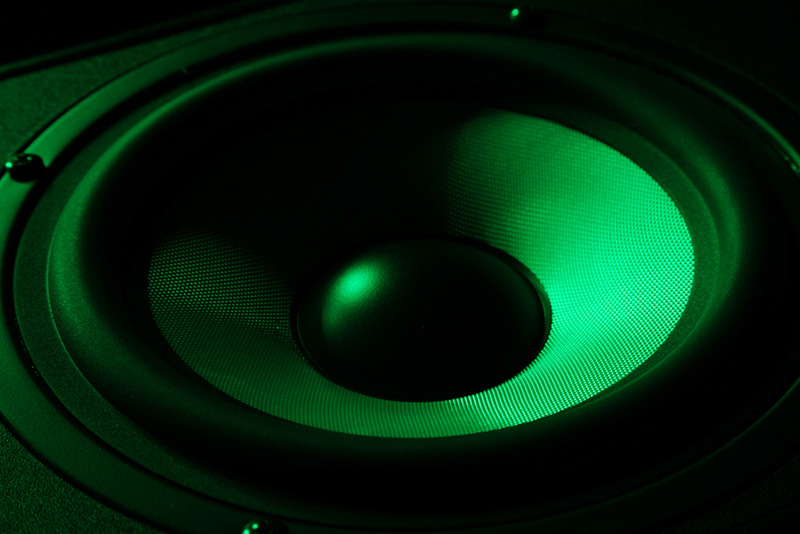What Does PMPO Mean in Home Theater?
If you’ve been shopping around for speakers for your home theater system, you might have come across the term PMPO. Not sure what it means? Or whether it should affect your decision-making? Read on to find out more about PMPO wattage and whether you should even consider it while choosing your speakers.
PMPO stands for Peak Momentary Power Output or Peak Music Power Output. It is said to be a measure of the peak power capacity of speakers and amplifiers i.e. the maximum load these devices can handle in a short period of time.

However, many consider PMPO to be a flawed method of measuring a speaker’s real power.
This is because PMPO only measures the highest power a speaker or subwoofer can handle in an instant short burst, often a fraction of a second rather than over a long duration. It does not give a real understanding of how the speakers will perform in real time.
Also read: What Hz Is Best for Bass?
Is it worth buying a speaker based on its PMPO rating?
From what we’ve researched- not at all! PMPO seems to be more of a marketing ploy with no significant technical merit.
Manufacturers use it to make their products seem more powerful than they actually are so that they can stand out among their competitors. If you pay close attention you will notice that PMPO is more often associated with low-quality audio equipment.
Why is PMPO not a good indicator of sound quality?
As mentioned earlier, PMPO measures peak performance over a small period of time, usually in microseconds.
And this is usually under the perfect, controlled conditions of a factory setting. The many factors at a home which will influence the power output of your speakers are not considered here. Therefore, PMPO does not give you a realistic representation of what the unit can actually handle.
Take this analogy for instance- Imagine you are flooring the accelerator of your car to its maximum speed and you keep it going for a long time! Your engine’s bound to heat up! The same thing goes for your audio equipment-if you use your speakers at their constant peak power, you will cause them to overheat and damage your gear.
Another issue is that different manufacturers use differing definitions for measuring PMPO. It could be taken from one maximum power peak or the average of the highest power bursts- depending on the manufacturers. So it is not consistently measured either.
If PMPO does not give you a realistic picture of a speaker’s true performance, why do companies advertise it?
Manufacturers usually display PMPO wattage prominently on packaging so that when potential buyers compare products, they might see a speaker with higher PMPO wattage, and assume it’s better and more powerful than it really is.
However, the potential buyers may not be aware that these high PMPO ratings are not sustainable and have no real value. Later, they are disappointed to discover that the speakers are mediocre and not what they had expected.
For example, if a manufacturer advertises a speaker with 2000W PMPO, it only means the speaker can put out 2000W of power for a brief instant.
If it pumped out 2000 watts for a sustained amount of time, imagine what would happen to the amplifiers. They would fry out! This is because amplifiers work in line with the speaker’s constant power output rather than peak performance.
What should you look for instead of PMPO?
Instead of looking at the PMPO wattage, a more accurate assessment of a speaker’s performance is the RMS.
What is RMS?
RMS or Root Mean Square refers to the continuous power handling of a speaker or a subwoofer or how much continuous power an amplifier can output. It is a more scientific and accurate measurement than PMPO.
RMS essentially measures power output over time rather than peak performance. So you’ll get a more reasonable picture of how your speakers will perform in real time without causing distortion or compromising sound quality.
For instance, if a speaker has 65W RMS, this means it will comfortably produce 65W over a period of several hours without damaging your speakers.
RMS Versus PMPO
PMPO is often a way for manufacturers to make a product appear to deliver more power than it actually can. This value has no real significance for extended periods of playback as it only measures momentary power and does not indicate the output of a speaker across a wide frequency range. These speakers are not designed to withstand their stated PMPO for longer than a momentary peak without causing serious damage.
The RMS wattage, on the other hand, will appear lower but is a truer indication of the output power across the full range of frequencies produced by a given speaker. This value is what you should actually consider if you’re interested in your speakers lasting longer.
If you search on amazon for home theater speakers with PMPO and RMS ratings you’ll see this difference. In our search, we found a speaker advertised for a high PMPO of 4500W but the RMS was 60W. The RMS here would give you a real indication of the speaker’s true power.
In fact, many experts say if equipment only comes with PMPO and no RMS measure, you shouldn’t even consider it.
Other important factors to consider while buying speakers for your home theater
Of course, your budget will be the most significant factor, but here are some other things to consider while selecting your speakers-
Match the right components
When buying your speakers, it is important to match them with your amplifier/receiver’s peak power output. Choosing speakers with a higher power output rating can cause damage to your sound system.
Speaker size based on room dimensions
You should choose speakers which are appropriate for the size of your room. Floor standing and bookshelf speakers usually take up more floor space, so are best suited for larger rooms. In smaller spaces, you may find it more suitable to purchase a soundbar or perhaps satellite speakers combined with a subwoofer.
Wrap up
To sum up, PMPO isn’t really an accurate measurement of sound quality and we don’t recommend you use it in your decision-making. Ultimately it is your budget, space, and preferences that should determine your choice of speakers for your home theater.
Also read: How To Connect a Microphone to Home Theater
References:
http://www.audiopolitan.com/blog/rms-vs-pmpo-power-rating-which-one-is-realistic/
https://www.lifewire.com/stereo-speaker-buying-guide-3134673





